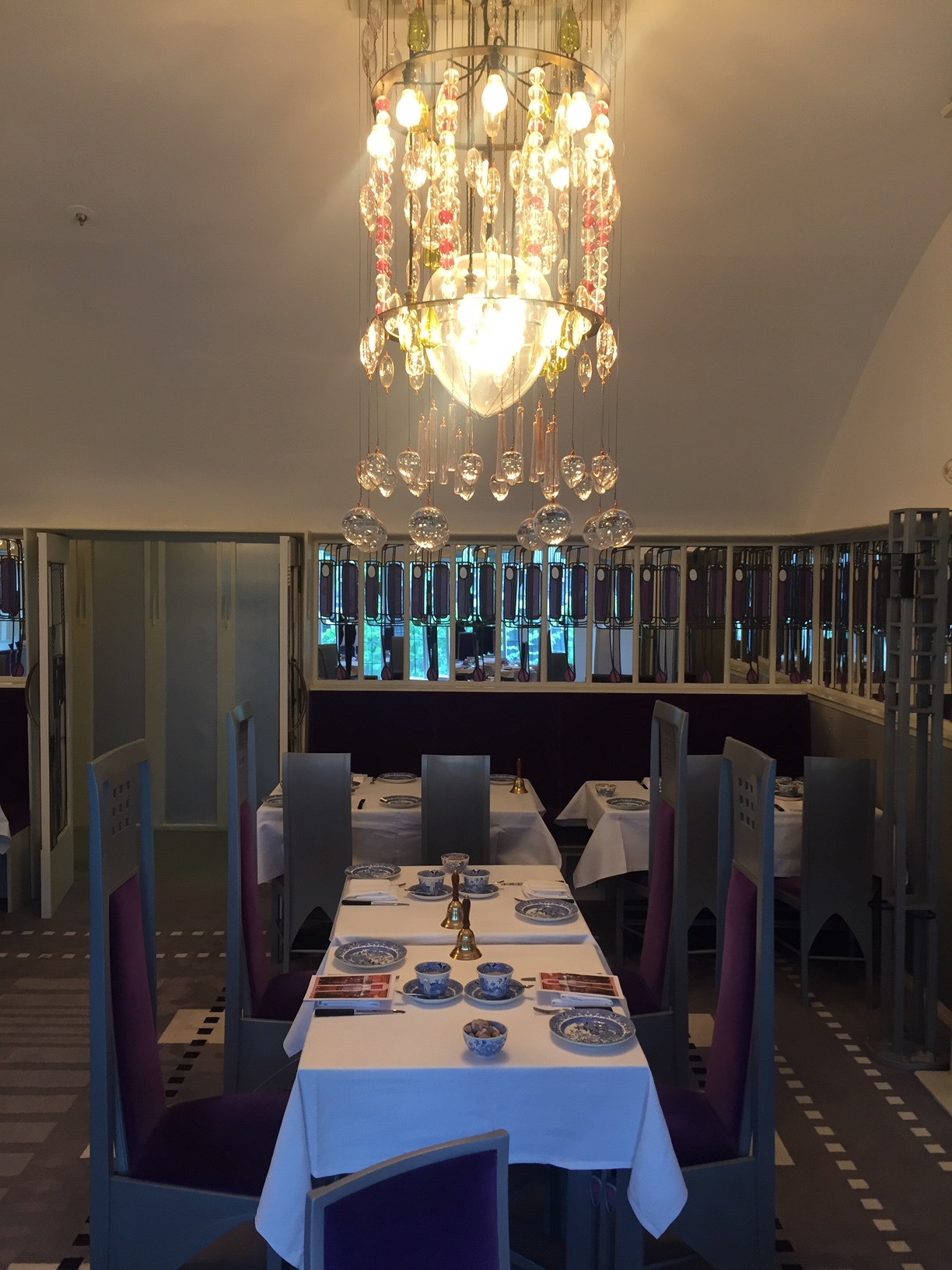The dreary Scottish days of unremitting rain finally stopped and the sun shone at a most magical place, St Andrews. This university, home of Will and Kate and other more distinguished graduates like JM Barrie overlooks both the storied golf course and an unexpected beach. It puts the Ivy League Architecture though very nice to shame and I suggest to all parents in light of the college payoff scandal and those who were considering similar subterfuge they look to Scotland for a truly elegant bang to their buck. I don’t think they require the SATs!
Zaha Hadid's Riverside Transport Museum in Glasgow
The dark exterior of Zaha Hadid’s Riverside Museum in Glasgow belies an acid green interior which bathes the vintage cars and old steam trolleys in an oddly generous and unusual light. The waterside transport museum comes after so many refined Mackintosh tea rooms and all white bedrooms and is the perfect jolt into the 21st century. This was one of Hadid’s last commissions and one wonders where she might have gone from here.
Harry Potter-land comes to life at the University of Glasgow
To come upon the University of Glasgow a thrilling, majestic series of cloisters, chapels, libraries and green quadrangles (at least the unremitting rain has that net benefit) is to feel as if Harry Potter himself will appear in cap and gown at any moment. The entire country of Scotland has re-branded itself as Harry Potter-land. Every bus or train tour is sure to take you by Potter sites where they filmed or have some kind of even remote reference. Apparently Rowling is issuing more books soon. Only the Starz series Outlander vies for a tourist’s attention. It was Charles Rennie Mackintosh who instead held mine.
William McCance, an anti war activist Scottish painter
After being imprisoned for conscientious objection during WW1, William McCance still refused to conform. McCance rejected the more conventional art which flourished in Scotland in the 1920’s like Cecile Walton. Instead, influenced by the Cubist elements wafting over the Channel, he began a series of paintings which reflected his anti-war stance. This painting at the Kelvingrove Gallery, Glasgow, from 1922 called ‘Conflict’ offers aggressive shapes which appear to be almost Guernica-derived. An outlier in the largely Art Deco decorative environment, he turned to book design and teaching in London and Wales. He had a small touring retrospective in the UK in the 70s but has largely been lost to history.
Miss Cranston's Tea Rooms by Charles Rennie Mackintosh
Miss Cranston ruled the social scene in Glasgow in the late 19th century. In a series of tea rooms, one restored in Glasgow—The Willow Tea Rooms—another, the Ingram, restored and installed in the Kelvingrove Museum (a World Monuments Fund project) , a third at the new V and A in Dundee (which I preferred, with a more robust and less fussy integrity),all developed in time when temperance in the air. Mackintosh was himself an alcoholic but these rooms, among the first where ladies could gather unchaperoned, anchored his fanciful designs. In actual fact, his wife Margaret was a co-author of many of his spaces, but has naturally receded in historical terms. The city of Glasgow aims to bring her to our attention by featuring her work alongside his both in the tea rooms and in their (free) museums.




